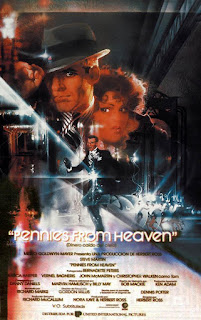The eight films recommended by the Church of Satan
In
1990 the Church of Satan was published: history of the religion with
worse reputation, the book
in which Blanche Barton collected the chronology and
preferences of the organization that its companion, the famous Anton
LaVey, founded during
years 60. Few noticed that in that volume a profuse list of the films
and books that
the organization recommended, and that at the moment can be consulted in its web page, along with the commercial availability of
the same, and that soon will be updated with more recent films only on Free movie torrents.
As
anyone who has been minimally interested in the Church of Satan will know well,
his purpose was not to drink virgin blood while singing songs to Beelzebub, but
to claim individuality and human will over the docile conformism that
Christianity had advocated during Millennia. In
short, a sort of countercultural compromise between Friedrich
Nietzsche and Ayn
Rand. Hence in
the list not only do not abound demonic films, but appear feature films that,
apparently, have nothing of satanic.
The
current High Priest of the Church of Satan, Peter H. Gilmore, has been interviewed by I09 about
this movie list. As he clarifies,
his creed is based on the acceptance of all human passions as healthy,
performing rituals for therapeutic purposes, not worship, and promoting justice
and epicurean video style. Values
all of them that appear collected in
the films of the list (in which also Simon Simon of the desert of Luis Bunuel).
Pennies from Heaven, Herbert Ross, 1981
It's
not about the movie starring Bing Crosby, but the eighties musical led by Steve Martin. Gilmore points out
that it is a work that "juxtaposes reality with fantasy" and reflects
the longing to improve us through song and music. “Black Sabbath? Nothing of that. The High Priest
remembers that LaVey admired the songs of the Tin Pan Alley like the
one that gives title to the film since considered them "superb unions of
music and letter that can teach us much on the human nature". The
scene with which Satanists feel identified? That of this voluptuous Christopher Walken dance.
Blade Runner (Ridley Scott, 1982)
In Gilmore's words, "a film that explores what we can find in our
future if man-made beings can achieve self-consciousness and, in some respects,
superiority." As he explains, LaVey defended the idea of creating
"artificial human companions" that would meet the emotional and
sexual needs of real human beings without their having to curb their darker
desires, as would happen in case of wanting to satisfy them with other beings
humans.
Artificial intelligence, Steven
Spielberg, 2000
Dark update Pinocchio devised by Stanley Kubrick prolongs
assertions about Blade Runner, but also helps to highlight
xenophobia and cruelty inherent in our species. Gigolo Joe, the character
played by Jude Law, is
precisely the kind of robotic sexual extension that LaVey fantasized about.
Strangers on a Train, Alfred Hitchcock, 1951
Patricia Highsmith's novel was based on a
moral assumption: what
would you do if you had the possibility of eliminating someone who has hurt you
without being discovered? It might seem that the Church of Satan promotes
individual interest over the general interest, but in reality, is concerned
about justice and its application: "the film examines the wrong path of
justice in the context of the fantasy of eliminating Someone who has done you
wrong, when this becomes a nightmare when a psychopath enters the
equation; A warning not to pursue punishment beyond what crime demands as
penance. " In other words, every punishment must be proportionate.
Death Wish, Michael Winner, 1974
Yes, the Satanists are fans of the Charles Bronson films, like this one, in which the
protagonist takes justice by his hand after his wife and daughter, are
mugged. ”The city’s justice shows how justice can turn into
personal persecution when the force of law fails in its mission," explains
Gilmore. Although Harry the Dirty is not on the list. Visit for more details about full movie downloads site.
The Treasure of the Sierra Madre, John
Huston, 1948)
The story of Fred C. Dobbs and his cronies across the border
mountains is, in Gilmore's view, a good description of human yearnings and
weaknesses. ”The treasure of the Sierra Madre is very
realistic when it comes to delimiting human types, and although they finally
lose the much-desired gold (a vain dream against which Satanism alerts), the
characters end up getting what they have sought through his actions".
Soylent Green, Richard Fleischer, 1973
The feature film that caused millions of people
to wonder why they are being taken to the mouth every day, and which Gilmore
defines as "a probable dystopia in which the rampant overpopulation of our
species and the lack of interest in the rest of the planet Leads to cannibalism
as the pragmatic solution to survival. " What is the position of
Satanists in the face of euthanasia? "The scene in which a peaceful
and humane life ends voluntarily shows a compassion for pain and freedom of
choice that generally do not offer most religions, but it is an alternative
that the Satanists approve in the case That life becomes completely
insufferable.”
Rosemary's Baby, Roman Polanski, 1968
Finally
a really diabolical film! The reader will be telling us. No, he is not on
the list because of his occult side, but because, as Gilmore asserts, "it
shows that Satanists can cover a wide range of human types, from a shipping
magnate or an obstetrician to the kind, side". It is one of the few
films that talk about the devil that appear in the list, and as the priest
points out, "it surprises us when a movie about the devil appears
something that right on Satanism." Poor people.








Comments
Post a Comment